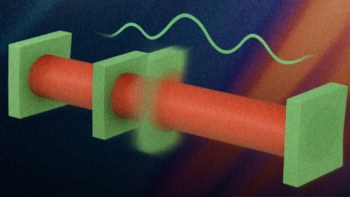Plutonium plays a key role in the nuclear industry but its peculiar structural behaviour has baffled physicists for 30 years. Conventional tests of crystal structure are unsuitable for radioactive elements such as plutonium, and current theoretical models fail to predict the surprising jump in its atomic volume that occurs when it is heated. Now Sergei Savrasov and colleagues of Rutgers University in the US have merged two existing theories to explain the anomaly (S Y Savrasov et al 2001 Nature 410 793).
Plutonium expands by 25% when its crystal structure changes from its ‘alpha’ form, at around 400 K, to its ‘delta’ form at 600 K. But the theory typically used to explain crystal structure, known as density functional theory, cannot account for this increase. Moreover, density functional theory also predicts magnetic effects that have never been observed.
The jump in volume is closely linked to the position of plutonium in the periodic table, according to Savrasov and colleagues. Plutonium is one of a series of heavy elements known as the actinides. The electrostatic attraction between the nucleus and the orbiting electrons grows stronger throughout the series because each successive element has an extra electron and proton.
Early in the series – up to and including plutonium – the electrons are loosely bound in the atom and the outer electron orbitals overlap. This effect is known as delocalization: electrons wander through the crystal lattice and the element is metallic. But in americium, the element that follows plutonium in the actinide series, the electrons are tightly bound: their outer orbits do not overlap and the electrons are ‘localized’.
Savrasov’s group suggests that the ‘delta’ crystal structure of plutonium is the missing link between plutonium and americium – they believe it combines both localized and delocalized electrons. They successfully enlisted a different model – known as dynamical mean-field theory – which explains the properties of materials like superconductors in which interactions between electrons are an important factor. They found that by incorporating the effects of electron interactions in plutonium, the theory could accurately predict its unusual structural behaviour.
“The atomic charge and crystal structure are the only essential inputs for the computer simulation”, Savrasov told PhysicsWeb. “It allows us to predict structural details as they change with, for example, temperature and pressure – and for materials as toxic as plutonium, this is extremely valuable information”.



